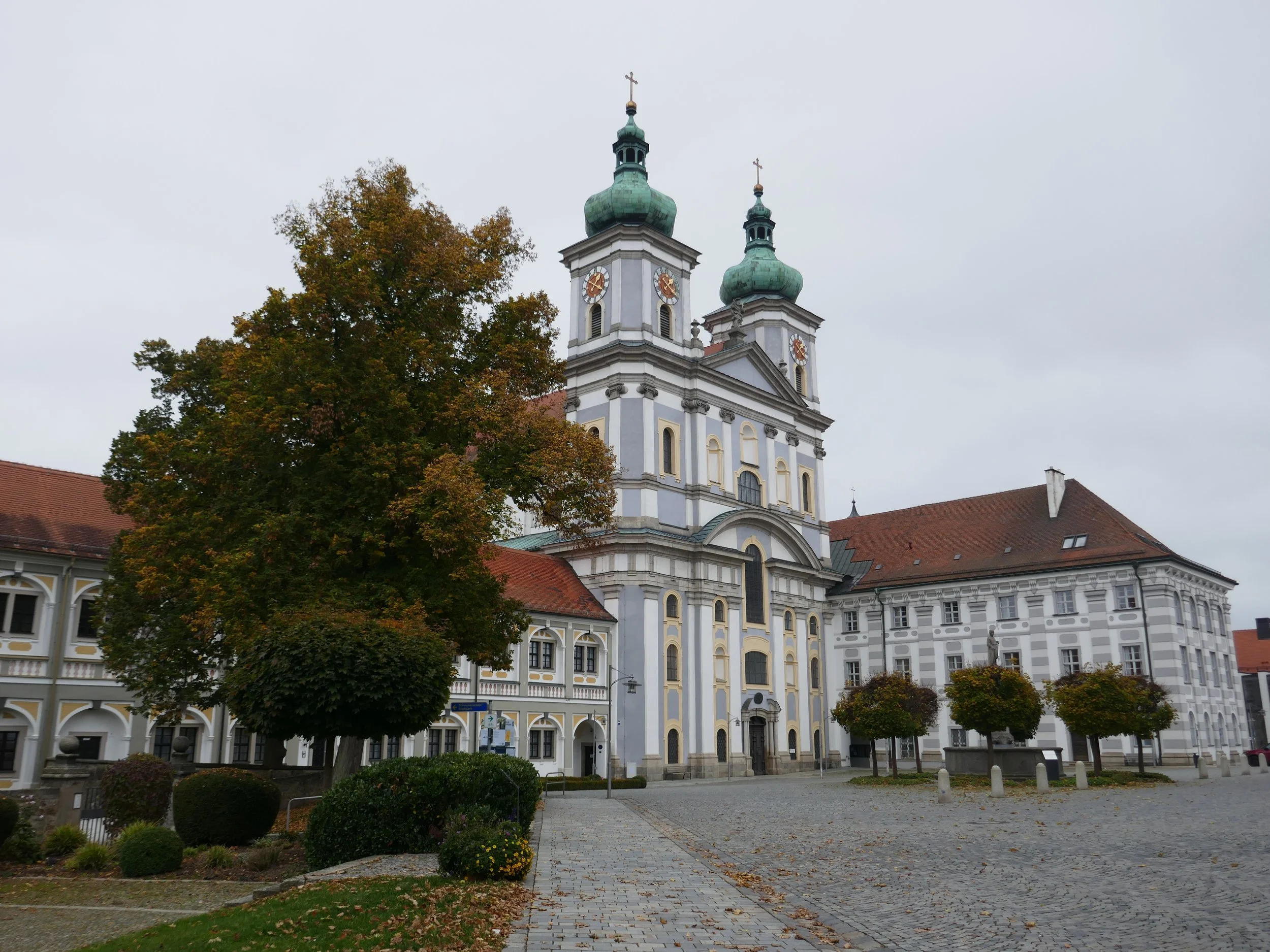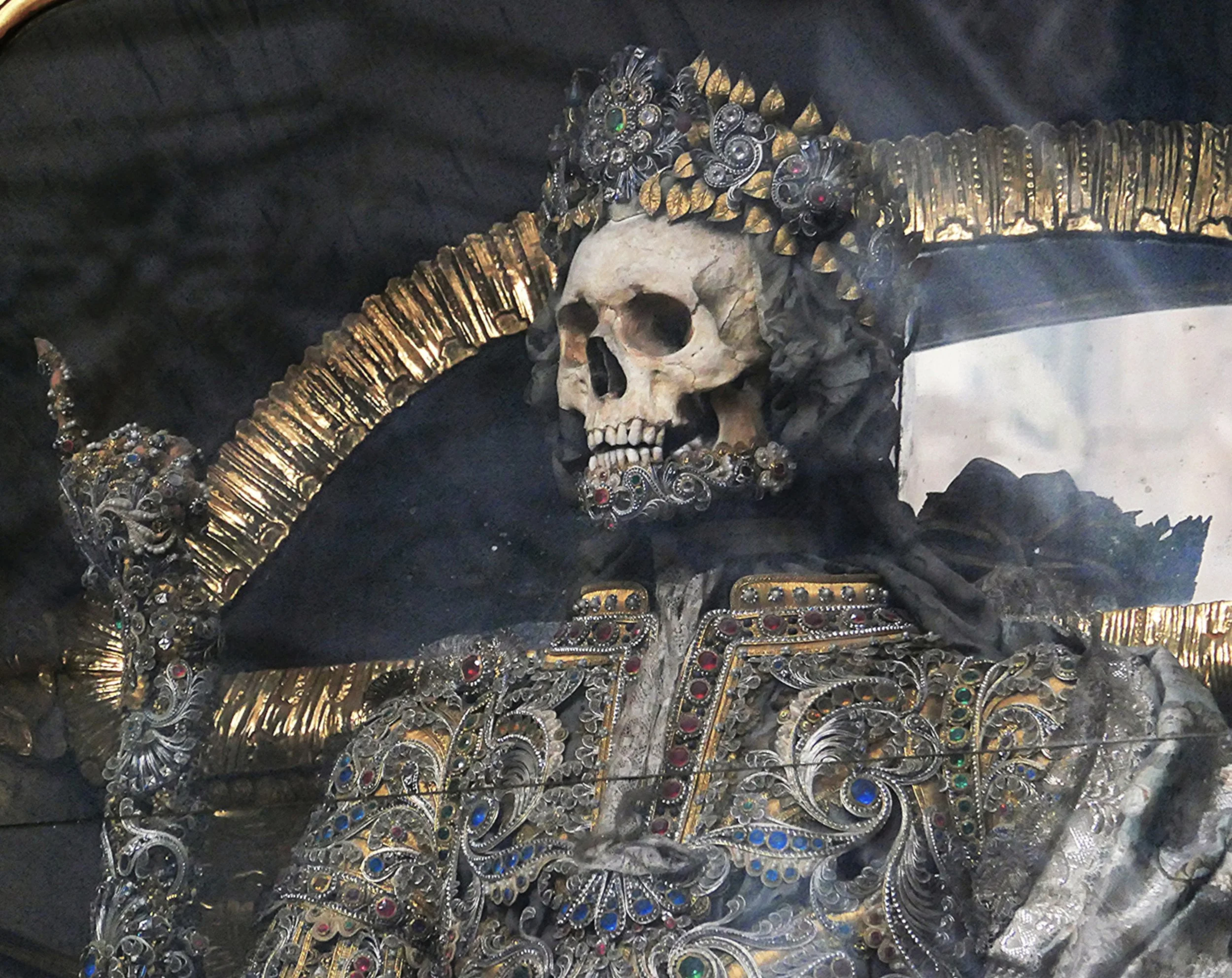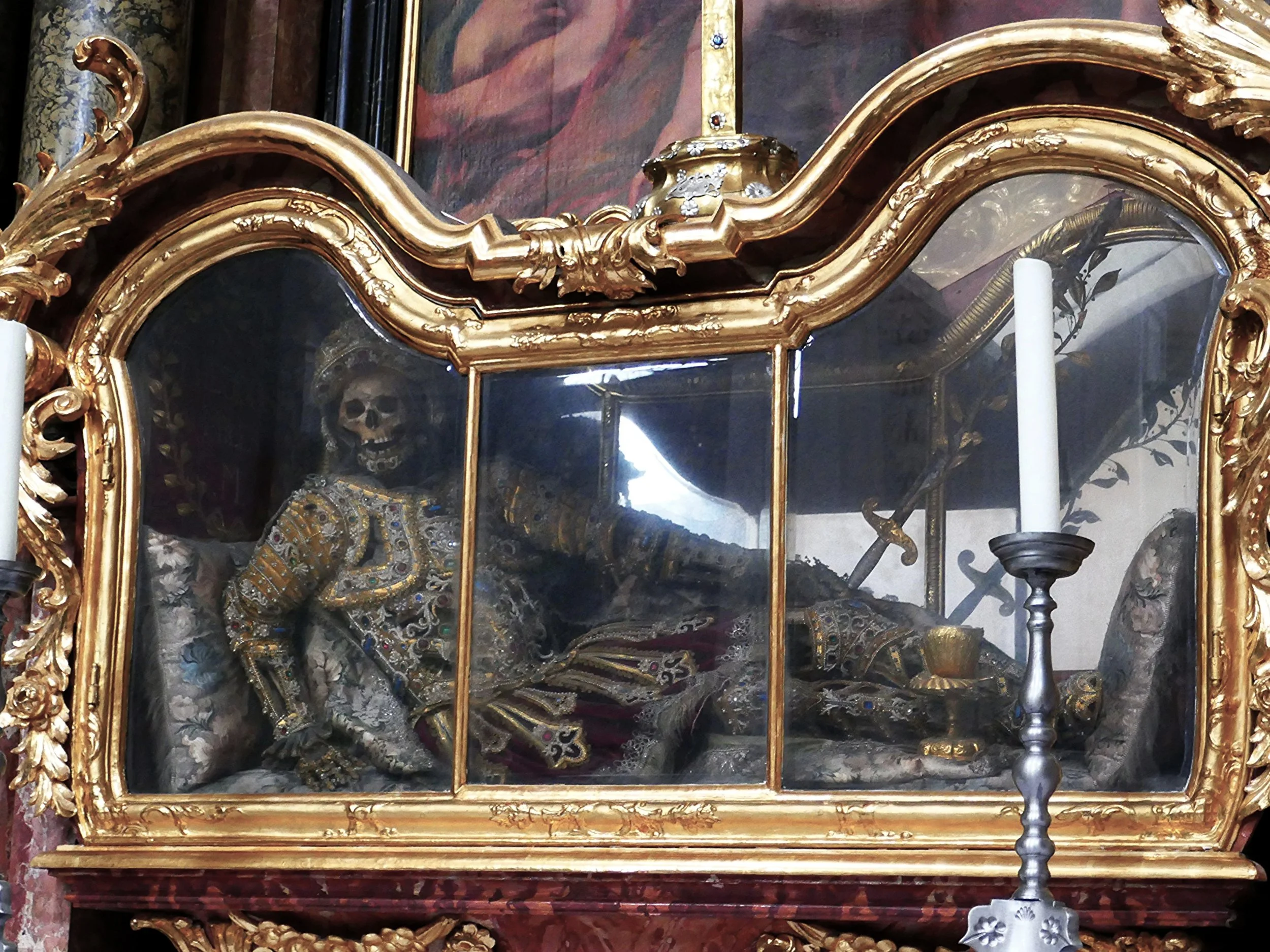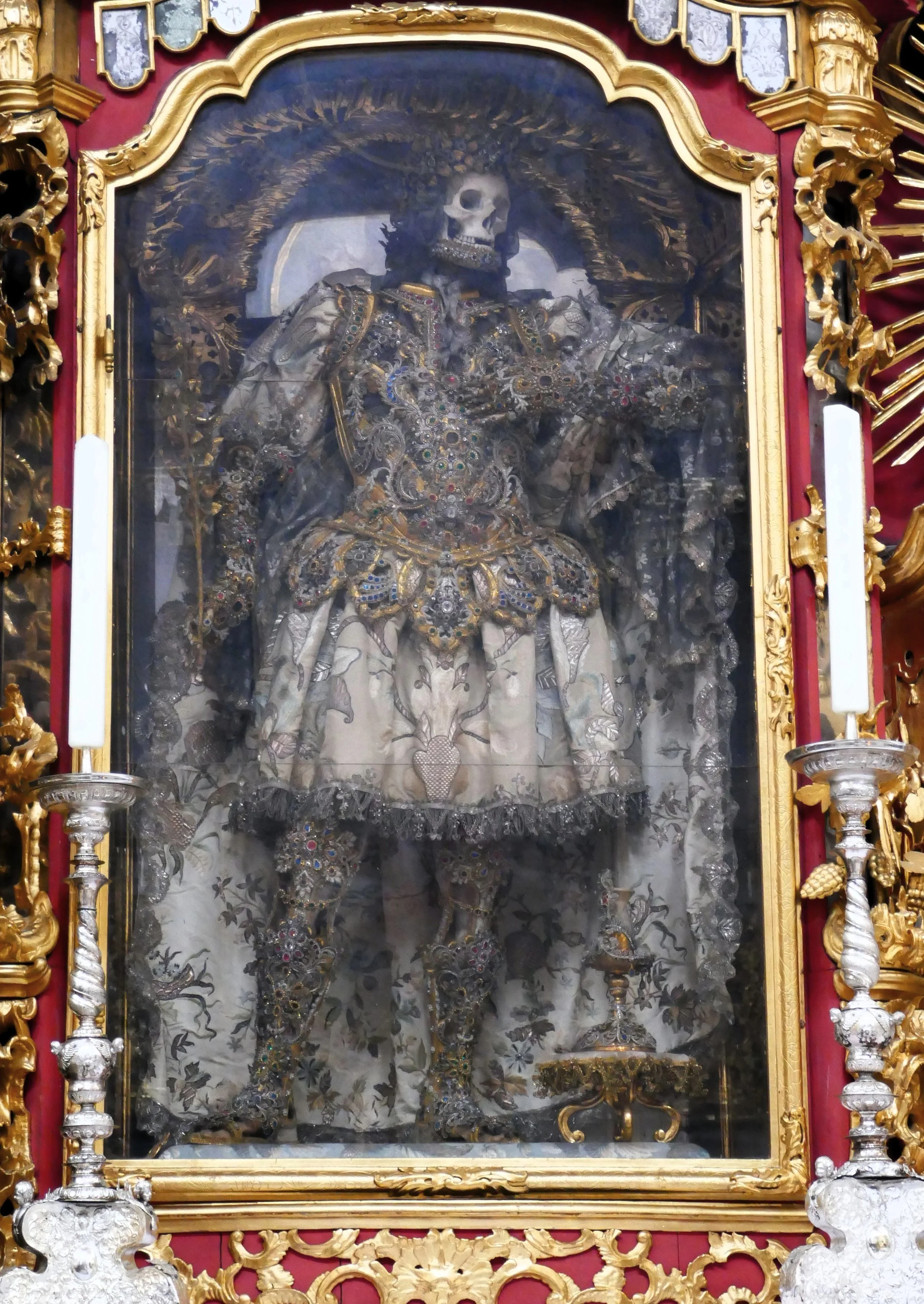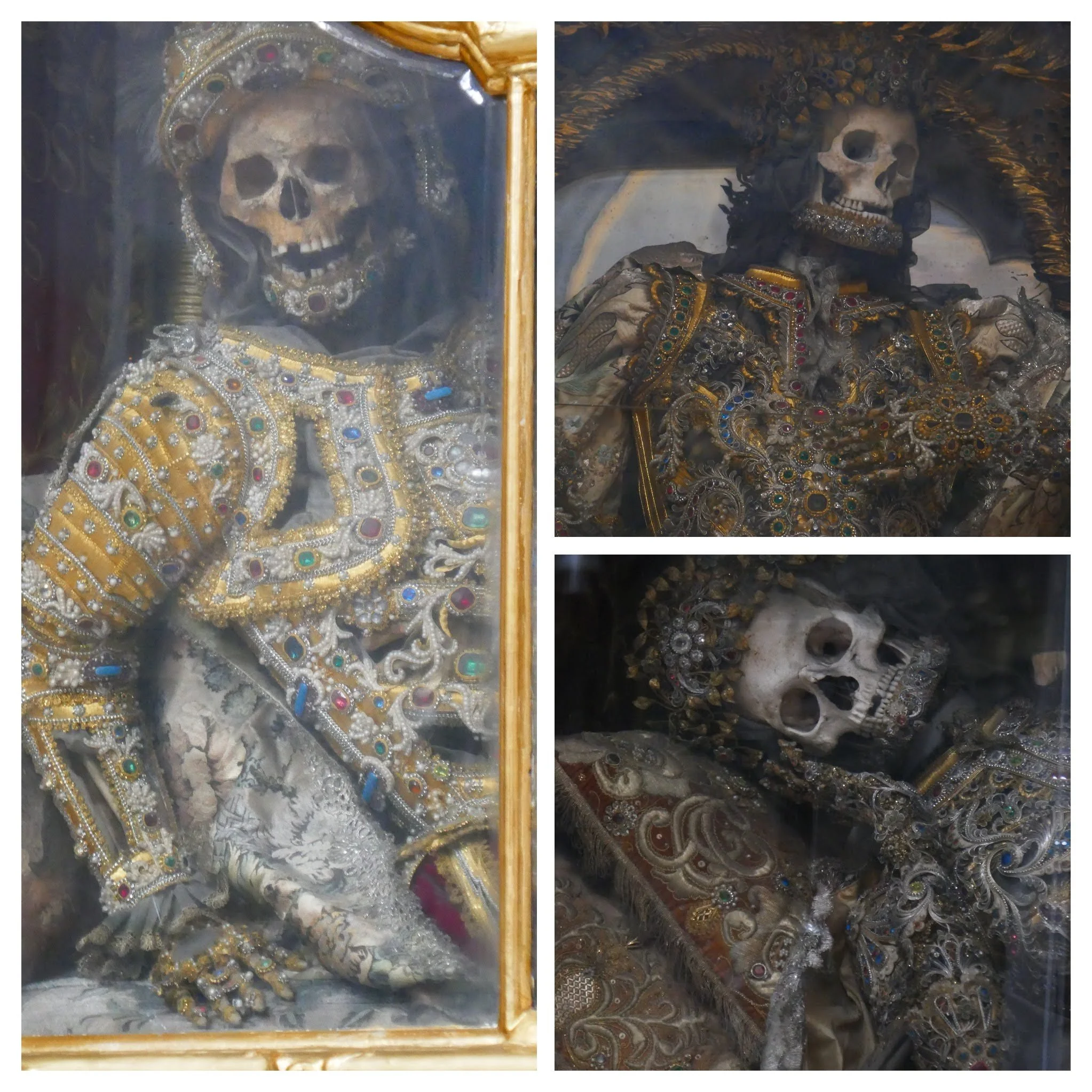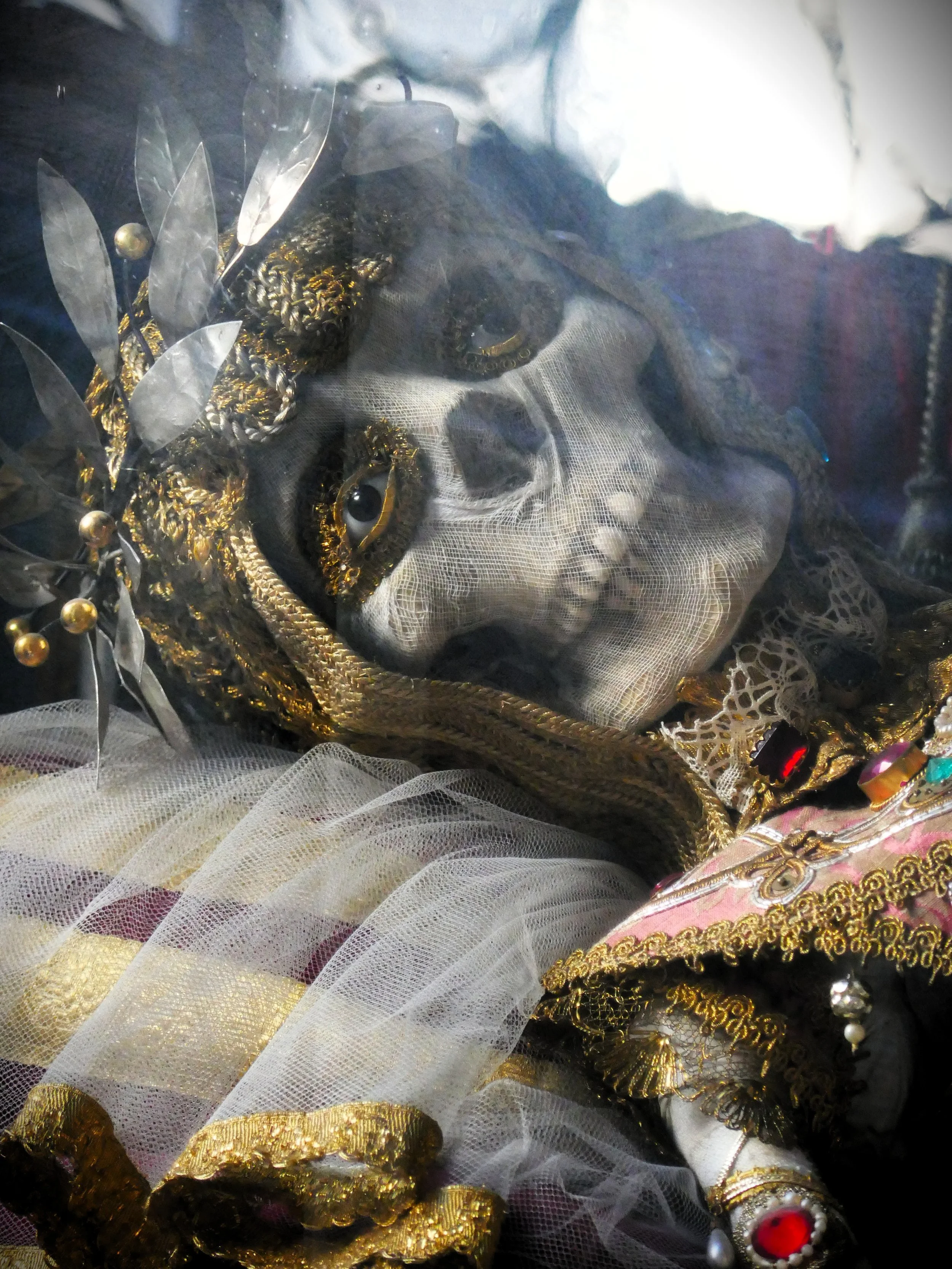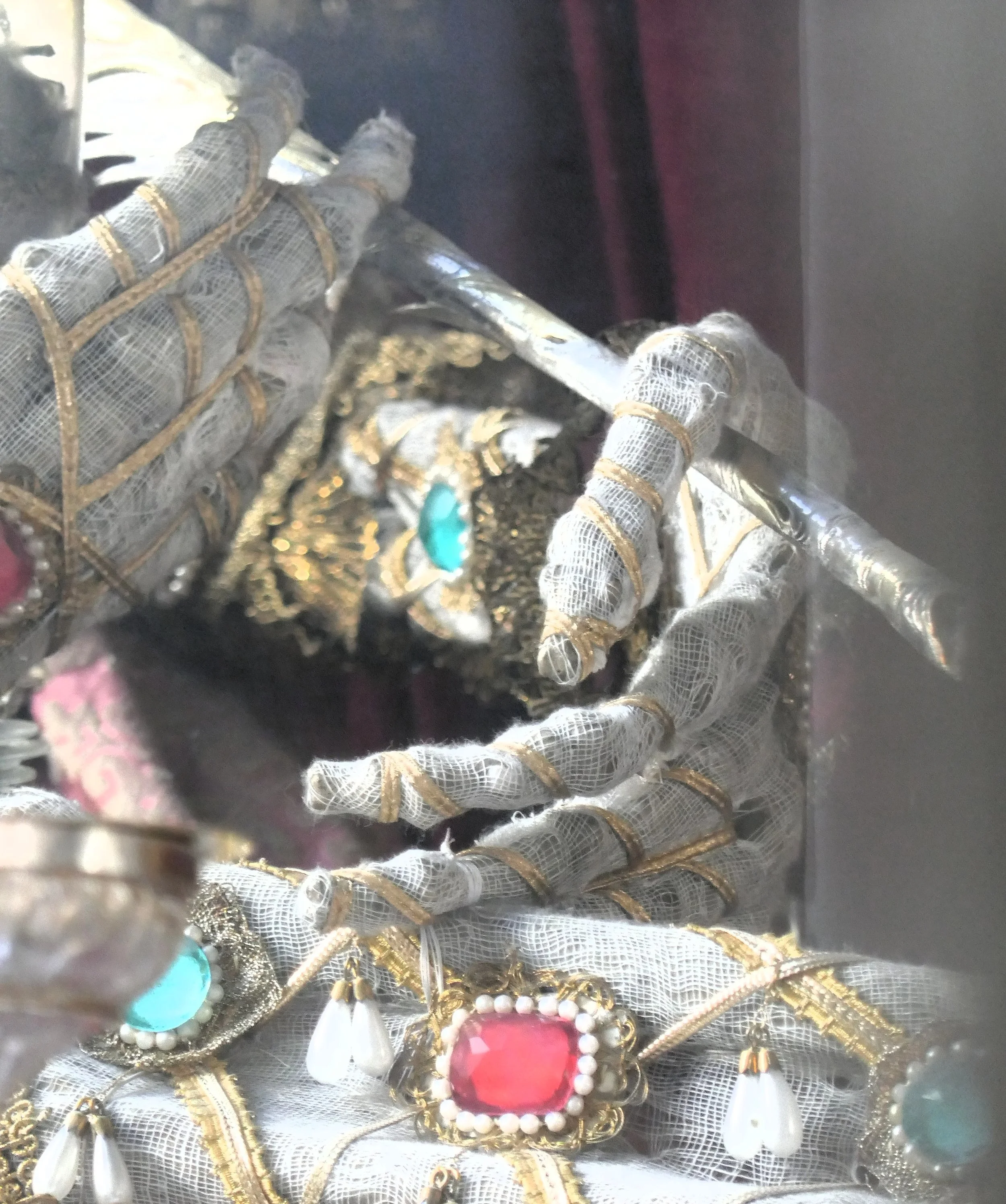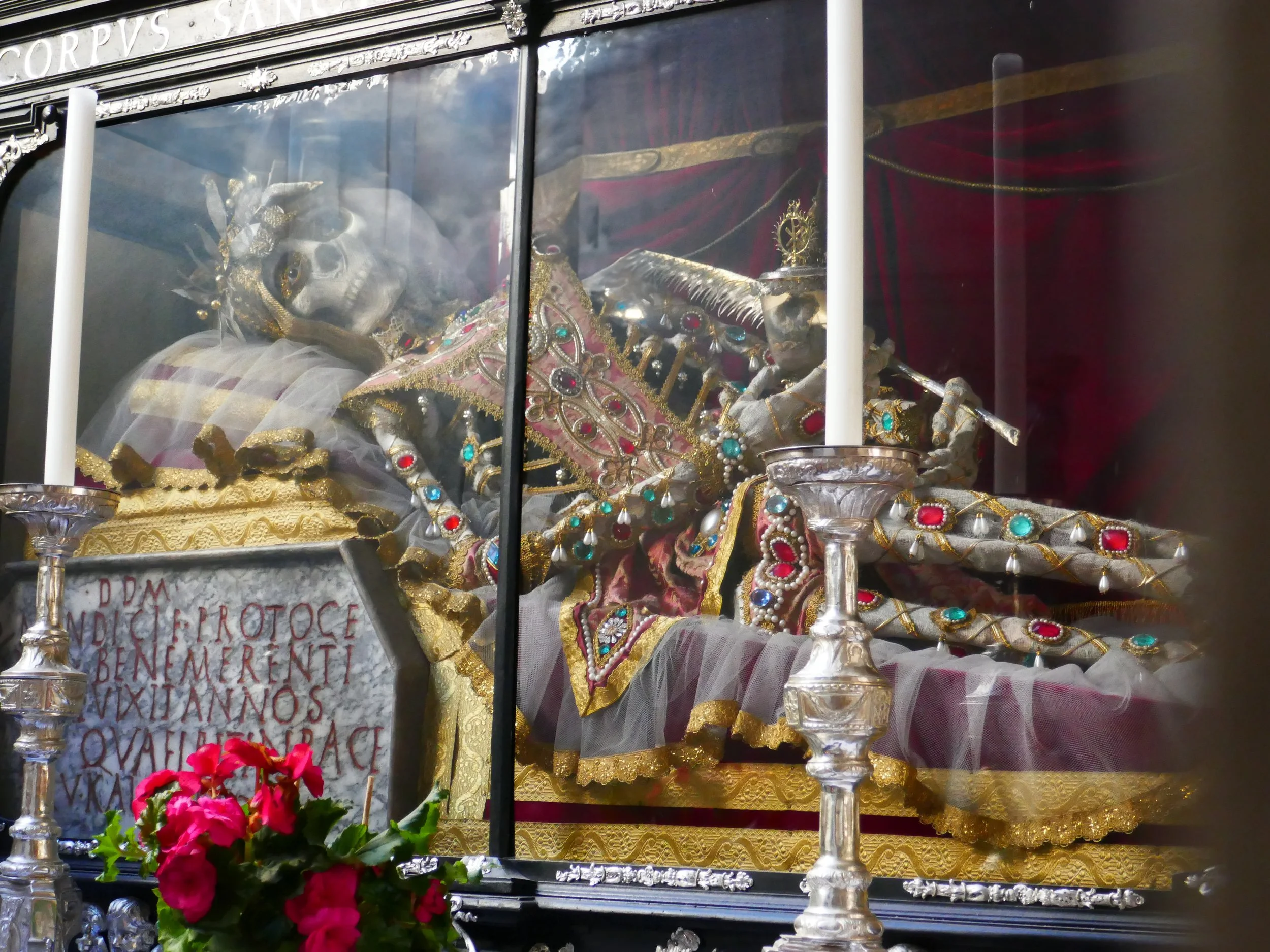Imagine the indignity. One minute, I’m a happily deceased Roman, nestled in my humble Catacomb…until I’m skeleton-snatched! It only gets worse. Scissors snipping, fabric rustling. I’m twisted and turned. After a millennium of blissful nudity, I’m suddenly smothered in silk and lace (itchy, itchy, itchy!!), with jewels glued into places that should never, ever host a bead (seriously, eww). Next thing I know, I’m plopped on a bed of satin pillows (okay, that was kinda cozy), ready for a very long business trip. In my living days, I was mucking out the Baths of Caracalla. Dead, I’m a full-on saintly relic on a roadshow. Talk about a late-career promotion. How I ended up in this glass case in Germany, though? Well, that’s a bit of a blur.
–Account from a Jeweled Skeleton, who preferred to be known only as “Bob”
My (Deb’s, not Bob’s) Visit to Waldsassen Abbey to Visit the Heavenly Bodies
Waldsassen Abbey and courtyard
Not far from the Czech border, in a small town devoid of tourist clamor, stands a grand abbey set on a quiet cobblestone courtyard. Its façade sports a subdued palette of gray, pastel yellow, and white, flanked by dual towers capped with onion-shaped copped domes aged to a rich green. The streets are silent—no cars, just the gentle hum of a grass-cutting Roomba dutifully trimming the lawn around the abbey.
A masterpiece of Bavarian Baroque, Waldsassen Abbey first rose to prominence in the 12th century as a Cistercian monastery. Bathed in golden light, its opulent interior is a dizzying display, where cherubs frolic among swirling stucco, gold overlay, and intricately carved wood.
Eleven full skeletons rest in enormous glass coffins all around the Abbey, fully decked out…peering out at us.
Inside the abbey are the magnificent otherworldly oddities we have driven 2 hours and 40 minutes from Dinkelsbühl to see: the Heavenly Bodies. They are simply magnificent! Eleven jewel-encrusted pseudo-saints dripping in dazzle rest in glass cases, rock stars of the afterlife. Adorned with colorful gems, pearls, gold, and silver (even their eye sockets and teeth are embellished) and clad in sumptuous 18th-century attire, they peer at us from glass cases—some lounging luxuriously, others standing guard.
Exhumed from Roman catacombs between 1688 and 1765, they were falsely touted as Christian martyrs and paraded across Europe in a misguided marketing ploy to boost church attendance. When the divine deception unraveled, many of them were unceremoniously banished to many a church attic and basement across Europe, left to languish among broken furniture and dusty hymnals. But these beauties at Waldsassen were spared that indignity.
Death Becomes Her: Saint Munditia’s Stunning Afterlife
Germany’s churches are home to many dazzling jeweled skeletons—or fragments of them—but one of my favorites is Saint Munditia.
In 310 AD (Rome), amid Emperor Diocletian’s savage persecutions, Saint Munditia met her fate at the business end of an axe. Her relics were unearthed from the Roman catacombs in 1675 and eventually found their way to Bavaria. Now she gazes at us from her display case in St Peter’s Church (Munich) with unnervingly expressive glass eyes, clad in a transparent, gem-encrusted bodysuit (a curious mix of reverent and risqué). Her features are delicate, graceful, feminine…beautiful.


